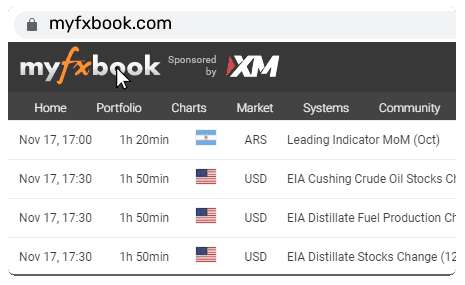- Domů
- Komunita
- Noví obchodníci
- Backtesting: The Secret to Validating Your Strategy Before T...
Advertisement
Backtesting: The Secret to Validating Your Strategy Before Trading with Real M
In financial trading—whether it’s forex, stocks, or cryptocurrencies—having a good strategy is not enough. A trading strategy needs to be tested before applying it to avoid unnecessary risks. This is where backtesting becomes a crucial tool, allowing traders to evaluate a trading system's effectiveness before committing real capital.
This article will help you understand what backtesting is, how to do it effectively, and common mistakes to avoid.
What is Backtesting?Backtesting is the process of evaluating a trading strategy using historical price data to determine whether it would have been profitable.
Benefits of BacktestingAssessing Strategy Performance: Helps traders determine whether a strategy is truly profitable.Testing Stability: A strategy may perform well in certain conditions but needs to be tested over various market scenarios.Optimizing the Strategy: Identifies weaknesses and allows for adjustments before real trading.Reducing Risk: Minimizes financial loss from using an unproven strategy.Building Trader Confidence: Having data that supports a strategy’s effectiveness makes it easier to trade with discipline.Steps to Perform Effective Backtesting1. Define Your Trading RulesBefore conducting backtesting, clearly define your strategy’s rules, including:
Entry conditionsExit conditionsStop-loss and take-profit levelsTimeframe used (M1, M5, H1, D1, etc.)Risk management (position sizing, leverage, capital allocation)A well-defined strategy makes the backtesting process more accurate and reliable.
2. Collect Historical Price DataTraders need to gather historical price data for the asset they want to trade. Reliable platforms such as TradingView, MetaTrader, or Python Backtrader provide extensive historical data.
The longer the data period, the more accurate the backtesting results, as they account for multiple market conditions.
3. Perform Manual or Automated BacktestingThere are two main approaches to backtesting:
Manual BacktestingOpen a price chart and scroll back to past data.Apply the strategy to each price movement and record results.Analyze key metrics like win rate, drawdown, and average profit per trade.Automated BacktestingUse platforms like MetaTrader (Expert Advisor - EA), TradingView (Pine Script), or Python (Backtrader, Zipline).Run the strategy on historical data and let the system generate statistical results.Automated backtesting saves time, eliminates bias, and allows testing across multiple assets.
4. Analyze the Backtesting ResultsOnce backtesting is complete, assess key performance indicators:
Win Rate: The percentage of winning trades.Risk-Reward Ratio (RRR): The average profit relative to the risk per trade.Maximum Drawdown: The biggest decline in account balance during the test period.Average Profit Per Trade: The expected profit from each trade.A strategy with a low win rate but a high RRR can still be profitable if it maintains long-term consistency.
5. Optimize Your StrategyBased on backtesting results, fine-tune your strategy by:
Adjusting stop-loss and take-profit levels for better profitability.Adding or removing unnecessary indicators.Testing across different market conditions.Common Mistakes in Backtesting1. Overfitting the DataMany traders make the mistake of tweaking their strategy too much to fit past data perfectly, leading to poor real-time performance.
Solution: Test the strategy on different market conditions to ensure adaptability.
2. Ignoring Trading Fees and SlippageSpreads, commissions, swap fees, and slippage can significantly impact a strategy’s profitability.
Solution: Always account for transaction costs in backtesting to get more realistic results.
3. Testing on Only One TimeframeA strategy may work well on an H1 chart but fail on D1 or M15 charts.
Solution: Test the strategy across multiple timeframes to check its versatility.
4. Not Testing Different Market ConditionsA strategy might perform well in trending markets but fail in ranging (sideways) markets.
Solution: Backtest in bullish, bearish, and sideways markets to evaluate adaptability.
ConclusionBacktesting is a critical step that helps traders validate and refine their strategies before using them in live markets. A well-conducted backtesting process not only helps avoid unnecessary risks but also boosts trader confidence and discipline.
To maximize effectiveness, ensure your strategy is tested over a sufficiently long historical period, consider trading costs and slippage, and assess performance in different market environments.
While backtesting cannot guarantee 100% success, when done correctly, it significantly improves trading performance and risk management.













